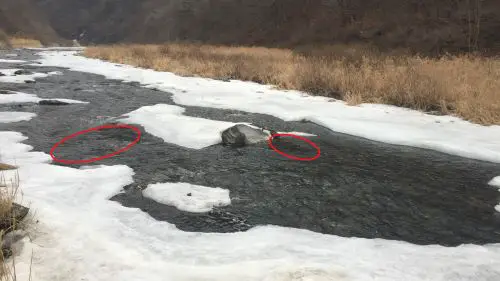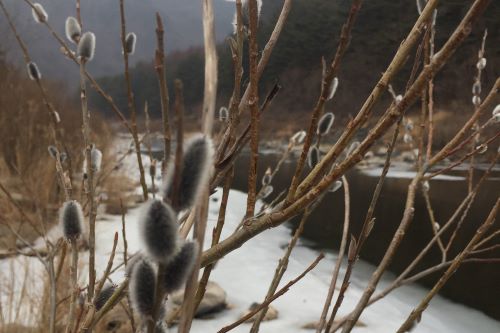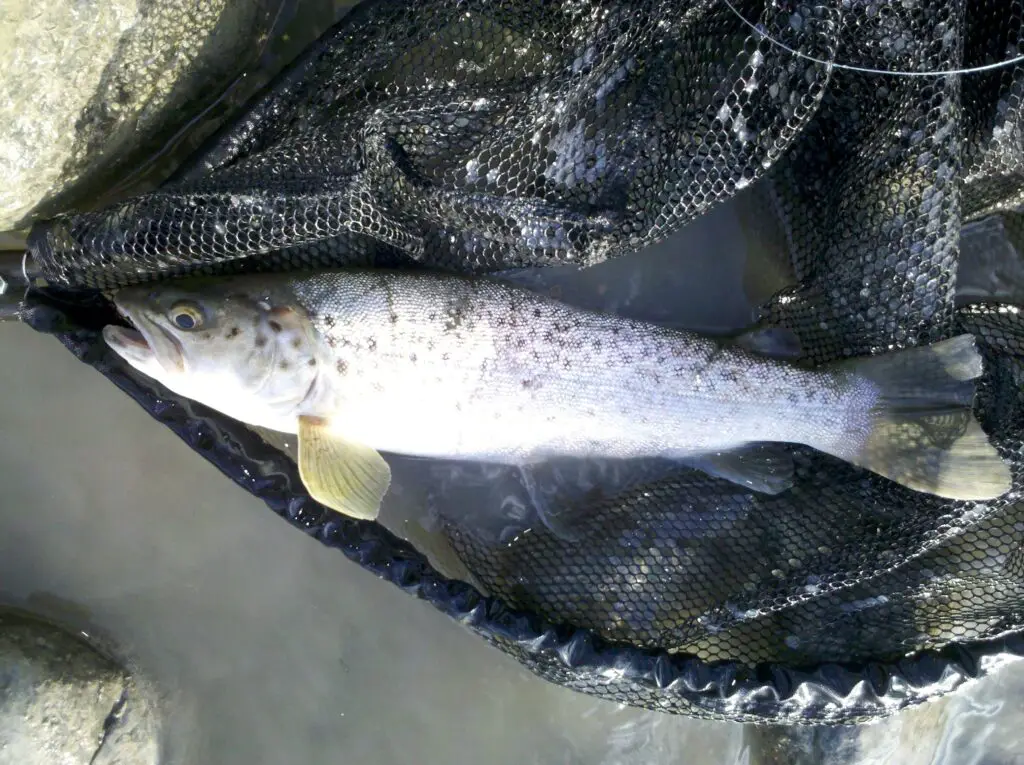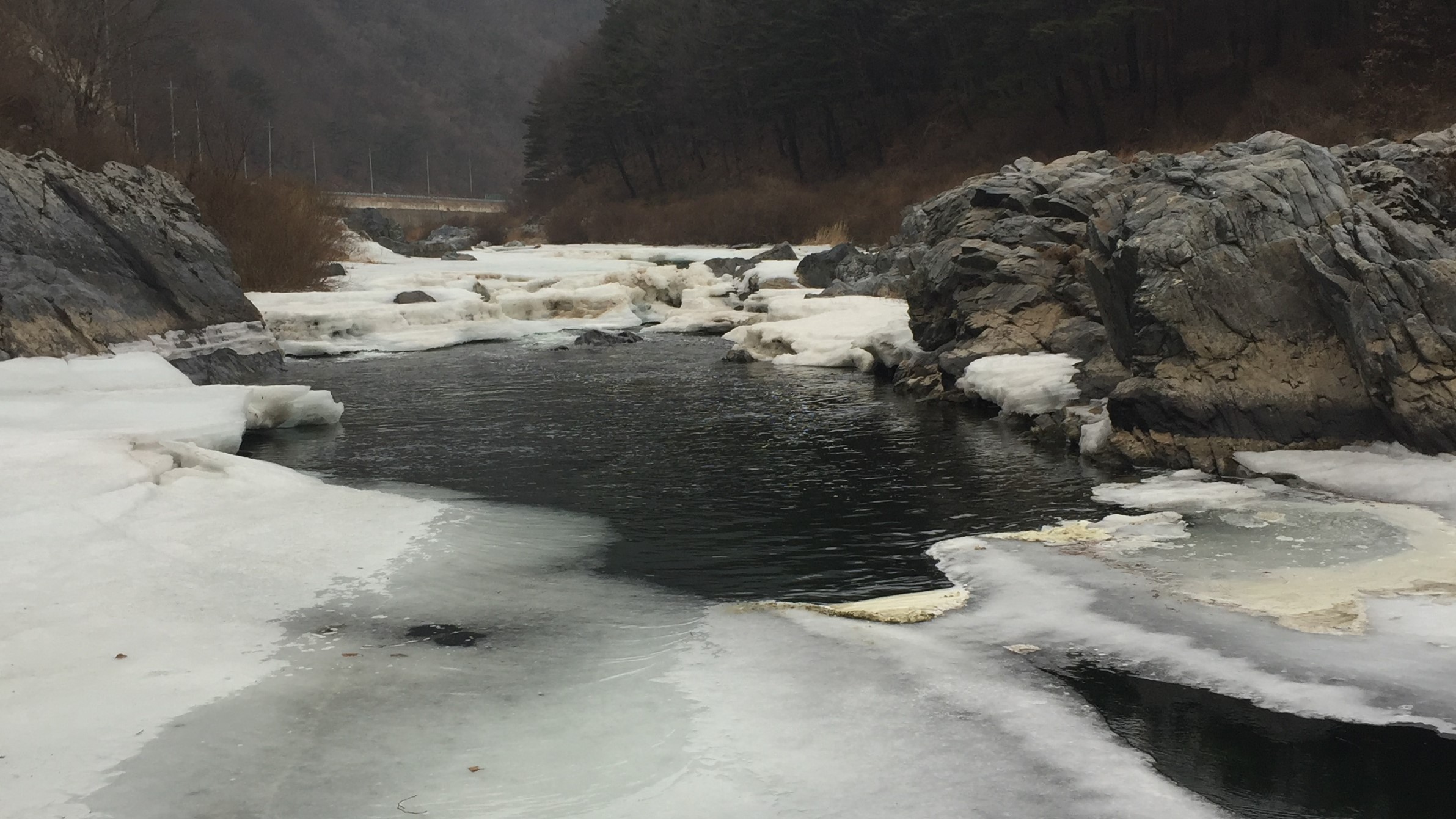Spring is a season of change, it is generally represented by thawing ice and spawning fish. In the very early springs, rivers and streams often flow low and clear, and much of the water is still frozen. As the ice and snowmelt, water levels rise and shallow, gin clear streams become torrents.
If I were to offer one key piece of advice to catch more trout when fishing during the spring is to seek and fish the warmest water you can find. That is because trout are very temperature sensitive, and if the water is too cold, they become sluggish and reluctant to feed.
1) Hints on where to fish in the early spring
First, I want to discuss where to fish. Trout fishing when the water is very cold is tough. So it is important to try and find slightly warmer water.
The warmest water, and generally the best place to target trout in the spring, is generally found in spring fed streams, deep lakes and reservoirs, and the tailwaters downstream of them.
If you happen to live near to the sea, then coastal estuary and tidal reaches of rivers are also prime fishing waters.
Unless you live in a particularly mild climate, I suggest avoiding freestone and snowmelt rivers. Such rivers often contain a large volume of snow and ice melt which really causes the temperature to drop.
2) In rivers, and streams target deeper, slower flowing water.
In the spring, trout are very reluctant to move, and still want to conserve their energy. This means they’ll sit and wait, rather than actively cruise in search of food.
As a result, trout are likely to wait in the deepest, slowest flowing parts of a river, where there is just enough current to bring the food to them. This does differ from the warmer months where they are more likely to feed right on the edge of the current.
When not feeding, trout will rest on the bottom of the deepest slowest water. The same often holds true year, round and not just in the spring.

3) In Lakes and Ponds target Shallows and Drop Offs
Just like in the winter, shallow flats remain a great place to target trout in lakes. That is because shallow water warms slightly faster than depths so, during the day, lake-dwelling trout leave the deeper water where they spend the night to cruise the shallows in search of food.
Another prime spot to target trout in lakes is around the edge of drop offs. If fishing from a boat, it is a good idea to use the fish finder to locate drops offs down to about 15 yards. Trout often patrol such areas in search of food.
4) River mouths in empty into lakes and larger rivers are a hot spot for spring fishing.
The final, and maybe the hottest spot to target in the early spring is at river mouths. That is because fish gather there to spawn. It is not only rainbow trout that spawn in the early spring month but several species of baitfish. So shoals of baitfish gather around river mouths before pushing upstream. Large, hungry trout know that so are often laying in wait.
5) Use a thermometer to find streams warmer than 45f
I often carry a thermometer with me while trout fishing. Trout, like all fish are cold blooded. When the water is cold they slow down, and they become more active when it warms slightly. In very warm conditions they start to suffocate.
Trout prefer to feed in temperatures between 45-65 degrees, and while trout can still be caught in water colder than that they become increasingly challenging.
So whenever I head out fishing, I record the water temperature, and over time I start to learn which rivers and ponds warm faster, and which remain cold well into the spring. This allows me to concentrate my fishing efforts on the warmest waters.

6) Fish the warmest part of the day
So much fishing advice says the best time to trout fishing is the dawn. Well, this only applies in warm water conditions.
In the spring, trout waters are still chilly, and trout often do not become active until the sun is higher in the sky and the temperature has started to rise slightly. So when trout fishing, target the warmest part of the day. This is usually some time between 10am and 4pm.
7) Spring trout are sluggish, use slow presentations.
In the early spring, trout are still sluggish. They do not want to waste energy on a high speed chase. So a very slow presentation works best, give the trout as much time as possible to strike.
8) Spring trout are more likely to stay deep
Trout rarely feed from the surface or rise during the spring. Several reasons why, but one of the main one is the lack of hatches and terrestrial insects. So unless you see trout actively rising, it is nearly always better to fish sub surface.
If you do see an early spring rise, then the trout are probably feeding upon midges rather than mayflies.

9) Avoid spawning Rainbow and Cutthroat trout
Spring is when these two species of trout spawn. While it is generally okay to target them during the spawning run, it is best to avoid fishing for them entirely while they are on their redds. Both species of trout generally make their redds in shallow gravel fairly close to shore. Often in the perfect depth for wading.
At this time of year, only observe spawning trout and do not try to catch them. This helps protect the next generation of trout. I also try to avoid wading up wading streams, because that can disturb the redds and expose the eggs to predation.
Once the trout have finished spawning, it is okay to target them. Just keep in mind that they are usually in poor condition so need to be handled with care when catch and release fishing.
10) Use thin line and leaders
In the early spring, the water can be very low and clear. In such crystal clear conditions, it is very important to use a low diameter line to avoid spooking trout. In such conditions, I nearly always fish 4lb line.
11) Keep track of recent stockings
Starting in the spring many fisheries departments start to stock lakes and rivers with new releases of trout. If all you care about is catching fish, then heading to the ponds with recent releases usually gives the best chance of success.
These newly released stock trout are often more willing to feed than wild or holdover trout.
12) Start of the melt can be amazing fishing
Melting snow and ice usually chill the water, but there is one exception. The first few days of the spring melt can cause the trout to feed hard. The surge of meltwater can cause water levels to rise rapidly. This rapid thaw can wash the bodies of many insects into the river.
This readily available source of food can cause the trout to gorge themselves. So as long as the water does not get too cold, there can be a few days of amazing fishing as the thaw begins.

